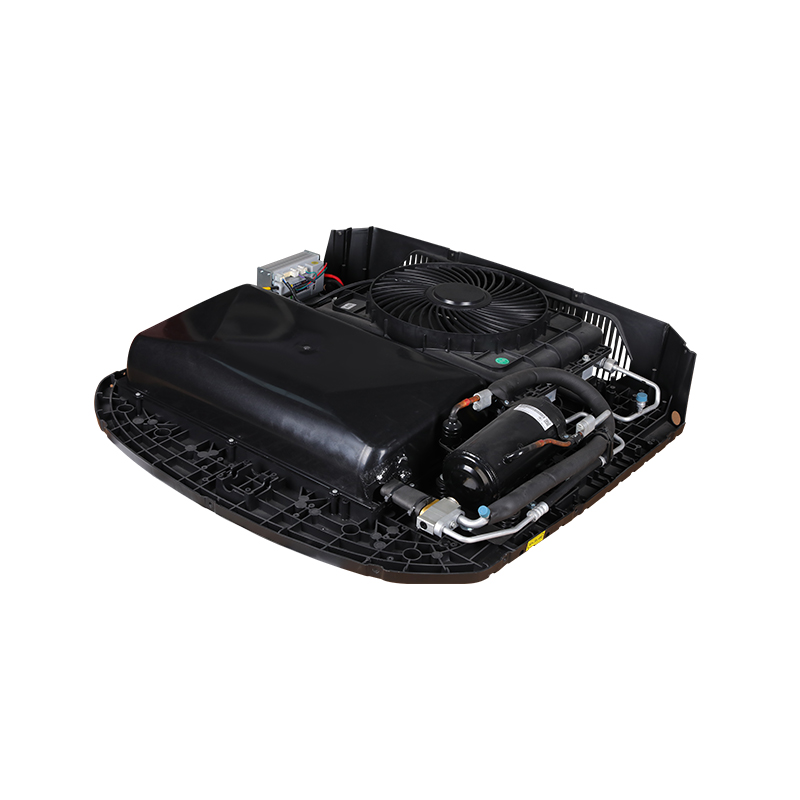The core function of a 12V air conditioner factory is to provide cooling in enclosed spaces without the need for an inverter or grid-based electricity. This makes it highly suitable for environments where AC mains power is either inaccessible or inconsistent. In recreational vehicles (RVs), trucks, and long-haul transport vehicles, the 12V air conditioner allows occupants to maintain comfortable temperatures while the engine is off, which helps conserve fuel and reduce emissions.

A typical 12V air conditioner includes several main components: a compressor, condenser, evaporator, expansion valve or capillary tube, and a blower fan. These components operate on the vapor-compression refrigeration cycle, similar to standard air conditioning systems. The primary distinction lies in the power supply: instead of relying on alternating current, the 12V air conditioner draws power from a DC source such as a lead-acid or lithium-ion battery system.
The energy efficiency of a 12V air conditioner is an important consideration. Because it often operates on limited battery power, the system must be optimized to deliver cooling performance while consuming as little power as possible. Many models use brushless DC compressors, which are more efficient and quieter than traditional AC motors. The power consumption of a 12V air conditioner typically ranges from 300 to 700 watts, depending on its cooling capacity, making it feasible for use with solar-powered systems in off-grid applications.
Installation of a 12V air conditioner varies based on the design. Rooftop units are commonly used in vehicles and RVs, while portable or wall-mounted units may be found in boats and tiny homes. The system can be connected directly to a 12V battery bank or integrated into a vehicle's electrical system. In some cases, users supplement the system with solar panels and a charge controller to maintain continuous operation without draining the battery.
Thermal insulation of the cooled space greatly influences the effectiveness of a 12V air conditioner. Since these units typically offer a lower cooling capacity compared to full-sized household systems, proper insulation helps retain the conditioned air, ensuring the 12V air conditioner can maintain the desired temperature with less energy usage. For this reason, they are effective in small to medium-sized spaces where energy retention is optimized.
In commercial transport, the 12V air conditioner helps maintain cargo temperatures and improve driver comfort during rest periods. In fleet operations, reducing engine idling through the use of such systems contributes to lower operational costs. Moreover, certain refrigerated trailers or mobile medical units use a 12V air conditioner as part of their temperature management system when AC power is not available.
Maintenance of a 12V air conditioner is similar to that of standard air conditioning units. Regular checks of the refrigerant level, cleaning of filters, and inspection of electrical connections are necessary for long-term performance. However, the use of sealed systems in many compact units minimizes the need for frequent servicing.
Safety and reliability are also crucial. A properly designed 12V air conditioner includes protection circuits for over-voltage, under-voltage, and overheating. These features prevent damage to the system and extend the service life of both the air conditioner and the connected power source.
In addition to mobile applications, the 12V air conditioner has found use in stationary environments where energy efficiency and independent power operation are priorities. Off-grid homes, remote cabins, and disaster-relief shelters can benefit from using a 12V air conditioner to maintain a livable interior environment without reliance on external infrastructure.
With advances in battery technology and the increasing adoption of renewable energy, the demand for the 12V air conditioner is expected to grow. Manufacturers continue to develop units that offer higher efficiency, lower noise, and better integration with solar and storage systems.